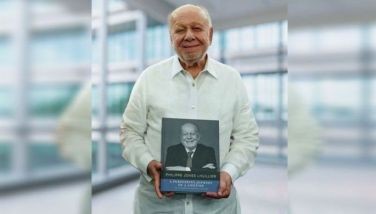The only remaining possible solution to the Palestine problem

Statespersons advised by experts started the Palestine Problem 110 years ago, and for 75 years statespersons and experts have tried to solve it, but have failed miserably.
Now let an outsider point out the obvious and only remaining possible solution.
Any two-state side-by-side solution is a non-starter for more tangible reasons than mutual hatred and Jewish strategic preferences. Palestine is topographically an unpromising candidate for political subdivision. Though it slopes down toward the Dead Sea, the region consists of mostly flattish desert with no forest cover, and has no internal natural boundaries or military choke-points that could justify or define a secure, defensible territory carved out from within it. (Unlike, say, the mountains that permitted Switzerland to be carved out of the middle of Europe, and which are also the reason Austria – “the Eastern (Oster) Reich” – isn’t attached to Bavaria.)
Seventy-five years have proven conclusively the foolishness of hoping that Palestinians and Israelis could happily share adjacent territory, once the very grave mistake of dispossessing the Palestinians in 1947-48 was committed. Yet this is the “solution” being flogged by countries such as the US, Russia, the UK, France, Canada, Germany, China, Singapore, Argentina, Nigeria, Indonesia, Australia, India, Pakistan, Bangladesh, Mexico, most of the Arab countries – in fact, almost every country on earth of whatever ideology or political persuasion.
Everyone refuses to see the obvious.
The obvious and indeed only remaining possible solution is not two states side-by-side, but two states far apart.
One side must move. This is not an ideal solution morally, but it is the only solution now available.
The Palestinians inhabited Palestine for 2,000 years and if anything have better claim than the Jews, who only probably inhabited Palestine for about 1300+ years, and whose claim was 2,000 years stale-dated by 1947-48. However, the fact is that the Israelis won’t leave, and the world can’t make them.
Therefore, however unfair or unjust, it will have to be the Palestinians who move. This is not a proposal for a forced ethnic relocation (as the US did with many Native Americans in the 19th Century, and as Canada did – for all its holier-than-thou posturing – with its indigenous citizens, as recently as 1967! Rather, it is a chance, for those who want it, to build a new life in peace somewhere else. If offered good-enough inducements, enough Palestinians might conclude that in their own self-interest they should move.
A sovereign New Palestine can be established, just not in the old Palestine.
Obviously there are enormous financial, logistical and emotional hurdles in moving large numbers of people and building a New Palestine somewhere else. But this would still be more feasible than building a new Palestinian state amidst the rubble (who would provide funds for that proposition?), while two million Palestinians live in tent cities in Gaza for decades into the foreseeable future (if they are lucky), and three million other Palestinians live in the increasingly-contentious West Bank, constantly harassed by Jewish settlers. All would remain under constant threat from not just Israel but also Iran-funded Hamas, whose aim is not to serve the Palestinian people, but to keep making trouble.
Here are the relevant considerations for a Two-States-Far-Apart solution:
• Whatever practical problems are foreseen with a New Palestine Somewhere Else, the same or worse problems apply to a Palestine Rebuilt Amidst the Rubble.
• Many Palestinians will resist moving, just as most people initially resist moving out of a hurricane’s path.
• Fortunately, majority Palestinian agreement isn’t required, any more than it was necessary that a majority of the world’s Jews move to Israel in 1948. A few hundreds of thousands are enough for an economically and politically viable state. Iceland has a reasonably self-sustaining economy with 350,000 people. Israel declared independence in 1948 with 850,000 Jewish inhabitants. Today, there may be enough Palestinians tired of war and willing to try something else. Others will follow eventually.
• No Peace Plan can come from or hinge on the US or anyone else in the West. Arab pride won’t allow it.
• Therefore, the initiative and the wherewithal for a Two-States-But-Far-Apart solution must come from the Arab world.
• Luckily, the oil-wealthy Arab states collectively have $4 trillion in sovereign wealth funds and a proven willingness to spend some of that wealth to enhance their prestige and influence.
• Various Arab-ethnic countries have land they don’t use or at any rate could easily spare.
• In varying degrees, those countries could use some money.
As I learned as a banker peddling custom-made derivatives, there’s nothing like a little healthy competition and fear of missing out to arouse the deal-making urges of the most recalcitrant seller.
Let’s make a deal.
Let’s make a deal that’s based not just on political wishful thinking, but on human nature, financial realities, self-interest, development economics and the various arts of bargaining and persuasion.
More specifically, let’s have a kind of auction.
To be continued
* * *
J. Manuel Gonzálezis not a Middle East expert, but for this article he draws on a multi-cultural background working on four continents, many years of World Bank experience advising governments and corporations, and financial deal-making expertise.
- Latest
- Trending





























